Our climate
Our climate has shaped life on Earth for thousands of years. A combination of “the atmosphere, oceans, lands, ice and the life on our planet acting in concert under the power of the sun” creates the climate where we live.
That’s how the Ladybird Expert book on climate change neatly puts it. The Ladybird guide is a cool little book written by a small army of scientists to help set you on the correct path.
The Earth’s atmosphere, “a layer as thin in relative terms as the skin of an apple”, is wrapped around the planet. It’s mostly made up of nitrogen and oxygen, but also contains other gases known as greenhouse gases, such as carbon dioxide, which trap the sun’s heat and keep the Earth warm enough for life to flourish. That is when the balance is right.
The problem is that carbon dioxide (CO2) generated by human activities also gets trapped in the atmosphere, increasing global temperatures. This is disrupting the climate.
The change bit
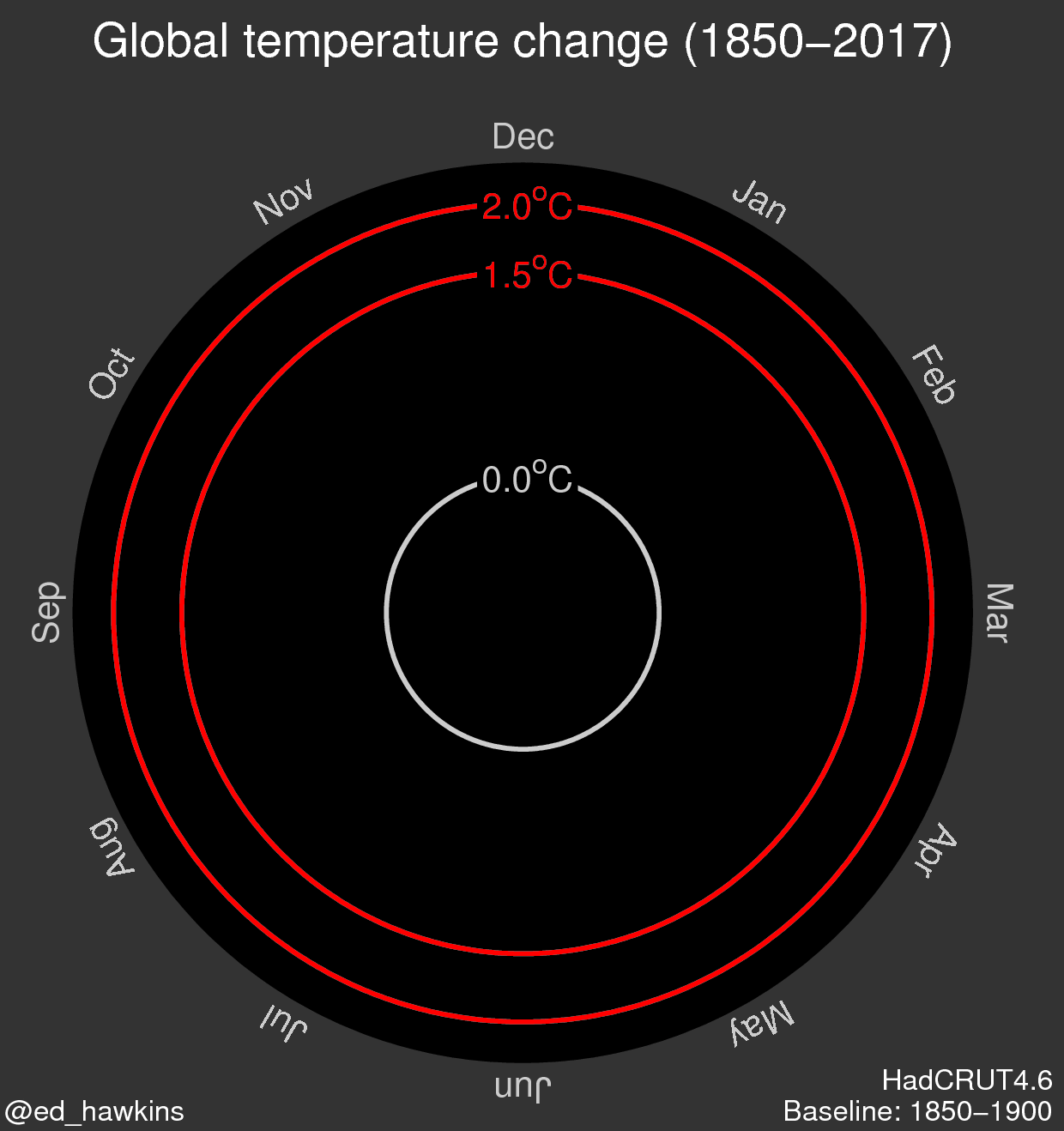
Irish physicist John Tyndall back in 1864 showed CO2 and methane (a combination of carbon and hydrogen) in the atmosphere trap infrared radiation (heat from all sorts of sources) and thus contribute to warming – known as "the greenhouse effect".
Satellites and Earth monitoring stations indicate carbon emissions are rising, and so too is global warming. This is disturbing stability that existed for centuries.
We are not about to be fried, but we are fast running out of time to be able to take effective action on the issue – some scientists warn we have less than 30 years to be able to control our own destiny.
Warming has accelerated in recent decades, so much so that global temperatures have increased by more than 1 degree compared with pre-industrial times. Everything changed from the middle of the 18th-century onwards, with the discovery of new fuel sources (coal, oil and gas) and the combustion engine, which transformed economies and societies, mostly for the good.
That increase may seem small, but if we continue the way we are living now, we are facing a rise of at least 3 degrees this century, which would make the world almost uninhabitable, not to mention the melting ice sheets and rising sea levels that will come with it. So we cannot afford to hang about.
Global warming is the biggest threat to the future of humans, animals and plants. There is a need to cut greenhouse gases to avoid irreparable damage to all species inhabiting the planet, through a process called decarbonisation.
It’s about cutting carbon emissions, trapping CO2 through natural ecosystems such as bogs and forests, and storing it in sealed old mines or in depleted gasfields. It may even include sucking carbon out of the atmosphere once the technology to do this is perfected.
Promises of action are all very well, but alarm bells continue to ring and are getting louder every year
And there are hundreds of ways we can decarbonise, from switching to an electric vehicle to generating electricity from wind and solar power and reducing food waste and plastic. Using energy efficiently and reducing our energy use have important parts to play.
Penalising polluting behaviour through “carbon pricing”, such as taxes on carbon, makes it more expensive to burn fossil fuels and to release emissions into the atmosphere, as well as rewarding those taking the decarbonisation route.
The single biggest contributor to emissions is the burning of fossil fuels – driving oil-guzzling cars and trucks, generating electricity, airline flights, heating buildings, and heavy industry making things.
We need to get real
On climate change, Ireland is a bad way - no two ways about it. You hear the word “laggard” often when our annual “climate report card” is discussed. We have a booming economy with little green public transport; a large expanding agriculture sector, a widely-dispersed rural population, many workers with long daily commutes, and there are too many draughty buildings heated by oil burners.
Unlike most developed countries farming is a big contributor to our overall emissions – contributing a third. This is mainly in the form of methane and nitrous oxide, which comes from cows burping (not farting, by the way); adding chemical fertilisers to land, manure and spreading of slurry.
Ireland is a world leader in “carbon efficient” dairying and beef production but it has promised to be “carbon neutral” by 2050 in other words, remove as much carbon from the atmosphere as put into it from farming; all part of the global effort to cool the Earth.
That is a colossal challenge, and yet we have to feed ourselves, not to mention export vast quantities of quality produce all over the world, most of which is generated in a sustainable way and is in much demand.
There is a crux. Some scientists and environmentalists believe decarbonisation is just not possible, especially as the world population surges on to 10 billion people, unless we eat less meat and reduce livestock numbers.
Let’s be honest, a big issue is: we don’t know how exactly to decarbonise in agriculture, let alone devise a road map to get there and yet it has to be done.
Our carbon checker
The Environmental Protection Agency (EPA) is the chief checker of carbon emissions in Ireland. Every year it reports on our emissions and predicts what's likely to happen.
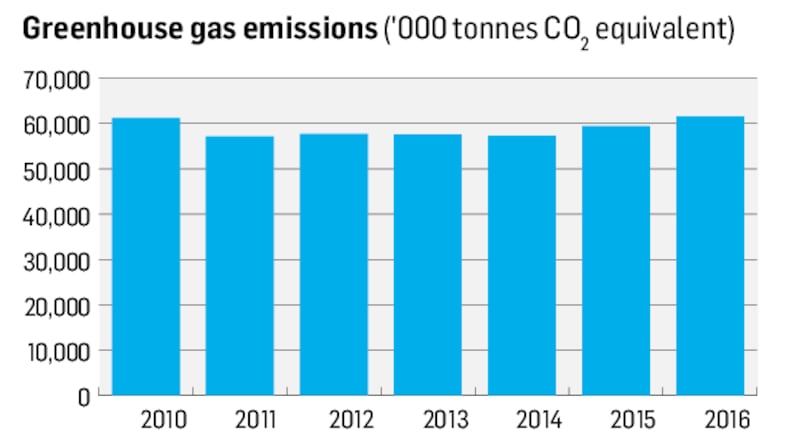
Our emissions are set to keep rising for years to come, especially in transport and agriculture, it warned last year. This is due to our lifestyle and how the economy operates. Growth in the Republic means emissions – for other states that’s not the case.
Annual rankings put us at the very bottom of the EU table on decarbonisation and other climate actions in what’s called the climate-change performance index. Most EU countries are already reducing their emissions, when we don’t even know when ours will peak.
Apart from the shame of not living up to what we promised to do as one of the world’s richest countries, it means penalties. We are going to miss legally binding targets on reducing carbon and adopting renewable energy for 2020.
On top of this, we face hugely demanding 2030 targets: a 30 per cent reduction on emissions from buildings, transport and agriculture, and a 32 per cent target for use of renewables. If we are behind on 2020, it makes delivering on 2030 all the harder, and more expensive.
The penalties are nasty, as they keep being applied every year until you get your house in order – some predict this will add up to a bill of more than €3 billion.
Ireland’s main problem is this: we cannot deliver what we have promised to do. If we simply achieved those targets, we would join the ranks of countries who are climate leaders.
The Paris Agreement
The 2015 Paris Agreement was a great achievement for the world, as 174 countries and the EU signed up to a deal setting out a global action plan to put the world on track to avoid dangerous climate change by limiting global warming to well below 2 degrees and pursuing efforts to limit it to 1.5 degrees.
The maths is simple
The world’s leading climate scientists say there is only a dozen years for global warming rise to be kept to a maximum of 1.5 degrees. A rise of even half a degree above that will significantly worsen the risks of drought, floods, extreme heat and poverty for hundreds of millions of people.
A 1.5 degree world?
Limiting warming to 1.5 degrees requires human-caused CO2 emissions to fall by about 45 per cent from 2010 levels by 2030, and reach what’s called “net zero” by about 2050. This demands dramatic and rapid changes in how we live.
Success would look like this, according to a UN report:
“Global sea level rise would be reduced by about 10cm by 2100. Slowing sea level rise can lessen the impacts of hurricanes, and give people living on islands and coastlines more time to adapt.
“Fewer species would go extinct, and ecosystems would retain more of their services to humans, such as providing food and water.
“Oceans would heat up and acidify less than with 2 degrees, reducing risks to fisheries and ecosystems.
“Some coral reefs would survive, instead of being nearly or completely wiped out.
“The risks of droughts, food shortages, floods, heat-related deaths are lower under 1.5 degrees of warming.”
A 2-degree world?
The ending of coral reefs that foster so much marine life and protect coastal regions. The disappearance of many low-lying islands of the South Pacific. Inundation of Ireland's main cities (all situated at the mouth of estuaries) by rising sea levels. Vast tracts of Africa overcome by desertification. Increased famines, infectious diseases and forced migration. Need I go on?
Extreme weather events
Weather by its nature is unpredictable. Storms can be a normal part of winter; violent thunder can erupt following a hot spell in summer. But climate scientists are now able to link climate change to a particular weather event, such as a heatwave, thanks to a new science called attribution based around analysing temperature records.
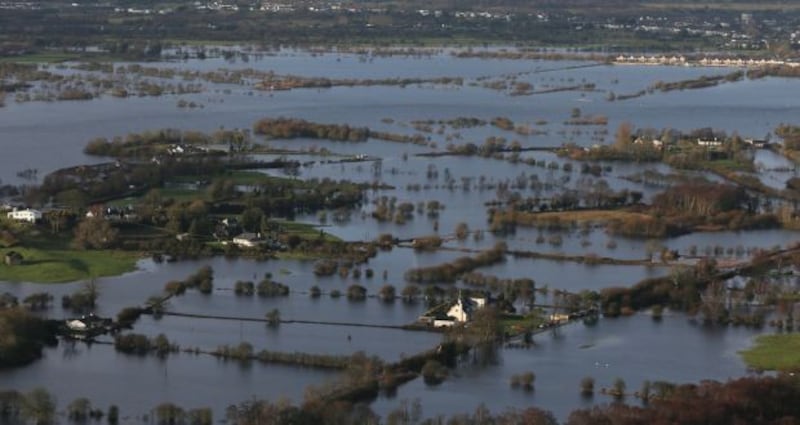
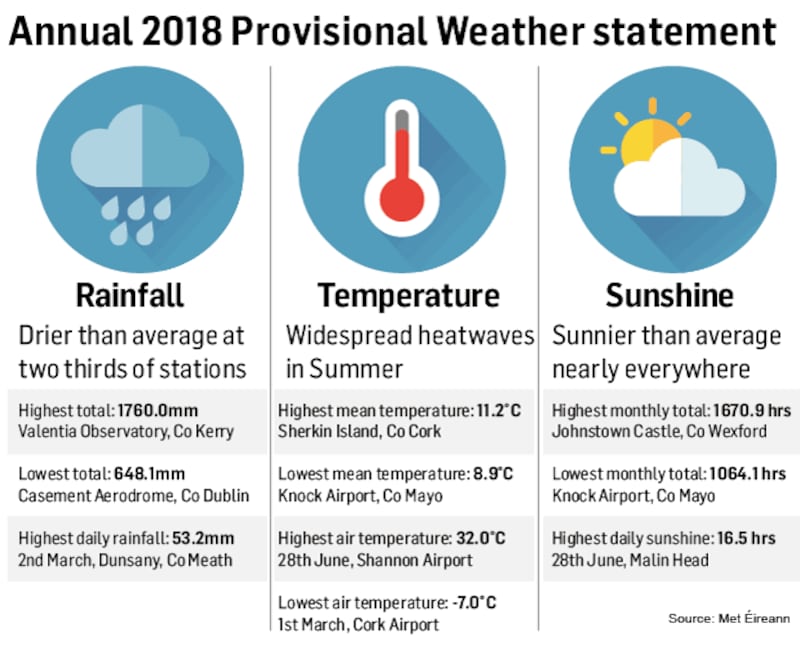
What’s more, every climate modelling exercise using supercomputers indicates most places in the world are likely to face more extreme weather events as the Earth warms. In Ireland’s case, weather events may be less frequent but more extreme in the damage they cause.
Mass extinction
As if we weren’t in enough trouble, we are also living in the sixth age of mass extinction. The combination of species decline and a warming world means the Earth is careering towards a catastrophic collapse of ecosystems.
A “biological annihilation” of wildlife in recent decades is more severe than previously feared, as climate change, intensive agriculture (including pesticide use) and urbanisation take their toll – and Ireland is not escaping. Just look at the decline in our pollinators, such as bees and butterflies.
Should we be scared?
Promises of action are all very well, but alarm bells continue to ring and are getting louder every year. Human-induced greenhouse gas emissions were at an all-time high last year, and a new record for the level of carbon dioxide in the atmosphere was established recently. What is shocking is this occurred so early in the year; CO2 levels typically peak in May, when the vast northern forests of North America and Asia are beginning to green up.
The figures are in line with scientists’ predictions of a planet creeping towards dangerous and irreversible tipping points.
The dangers of collective foot-dragging on shifting to a carbon-free economy are obvious. It is not being overly alarmist to warn of the potential devastation facing us, notably food and water shortages – just look at the effects of the drought and heatwaves across much of the northern hemisphere last year.
From fear to doing
Taking action on all of this can be scary and daunting, but parking that for a minute: the technology to curb emissions dramatically is widely available. Using nature’s own resources can have a huge impact too. So instead of burning peat, we re-wet bogs that can act as great carbon sinks.
Technical solutions are not rocket science. Some environmentalists even believe the pathway to keeping temperature rise to within 1.5 degrees can be embarked upon without resorting to mechanical devices or planting billions of trees, though they have a critical role in absorbing CO2.
Urgency is an essential ingredient missing in too many developed countries – those most responsible for emissions. In Ireland’s case, the Government has promised a lot and is finally moving climate action towards the top of its agenda. But our emissions don’t lie.
We could push fear aside and collectively pursue decarbonisation urgently, as it will be better for the economy and for the health of citizens. It will also protect our fragile ecosystems. The cost of renewable energy is dropping, making it all very doable and not with huge attached costs.
It’s hard to find optimism when you think the world is about to go into breakdown mode. But everywhere you look states, regions, businesses, communities and individuals are taking meaningful action – and now young people are becoming the most powerful voice for change.
Even in the US, where president Donald Trump continues to diss the science of climate change as fake news (you probably know he has pulled the US out of the Paris Agreement), they are talking about a "Green New Deal" which would transform America.
In Europe, wind energy will be the largest power source for electricity in the EU by 2027, years earlier than previously expected.
Ireland is a world leader in having a robust electricity grid that can take a wide variety of renewable energy into the supply system at any one time. We are finally going to exploit our vast offshore wind resources.
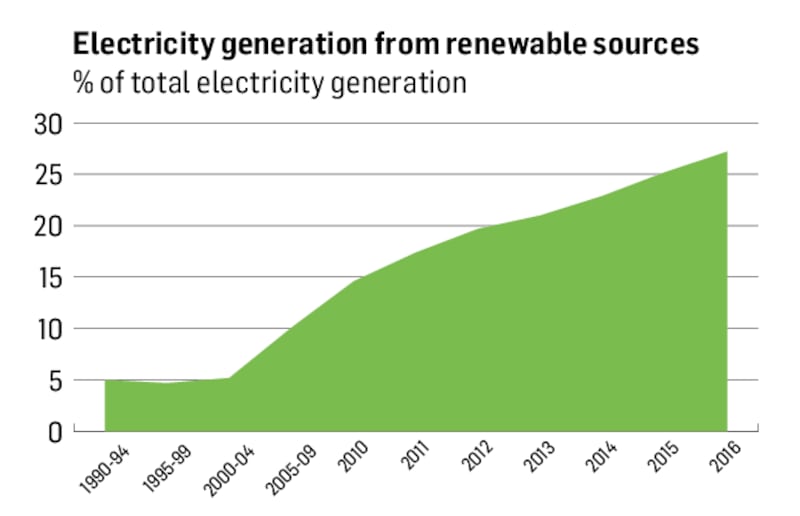
A just transition
But moving quickly to a decarbonised world must not unfairly penalise those least responsible for climate change, such as the people of sub-Saharan Africa. We must also avoid penalising groups such as the Bord na Móna workers in the midlands as the State company gets out of peat, or the least well-off in society who are most dependent on fossil fuels.
Who is Greta Thunberg?
The Swedish teenager Greta Thunberg has become a climate action whirlwind ever since going on strike from school last August. She displays a rare brand of brevity and bluntness.
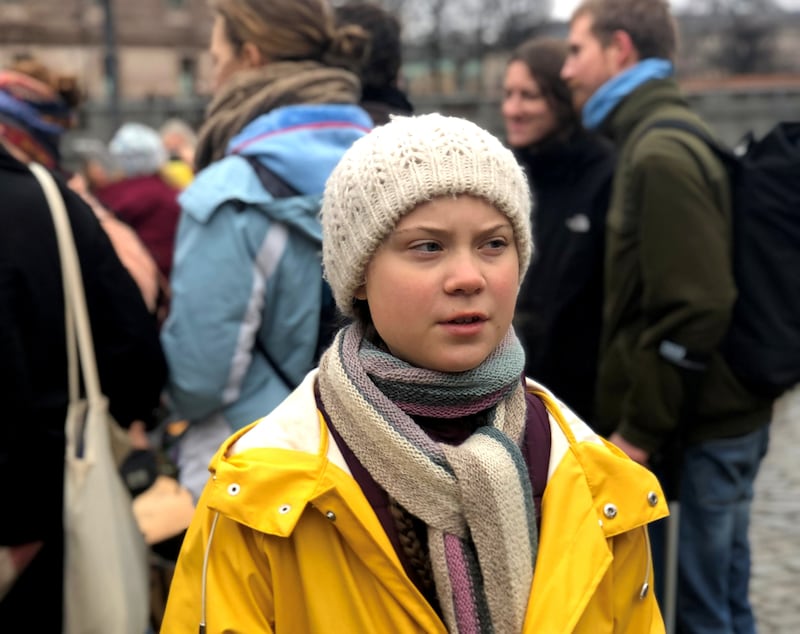
Adults, especially politicians, are her constant target. She started out with a lone protest on a Friday. This has since morphed into an international movement. Friday, March 15th, will give a strong indication of what school strikes for climate action have become.
She declared in January: “Adults keep saying, ‘We owe it to the young people to give them hope.’ But I don’t want your hope . . . I want you to act as if the house is on fire. Because it is.”
On what to do, she is equally direct: just reduce carbon. Her demands are clear:
– Follow the Paris Agreement and the IPCC report [the latest verdict of those top climate scientists working feverishly with the UN Intergovernmental Panel on Climate Change];
– Stay below 1.5 degrees;
– Focus on the aspect of equity and climate justice, clearly stated throughout the Paris Agreement, because no manifesto can be more radical than that, and
– Unite behind the science.
The Greta whirlwind is hitting Ireland. Many young people have already stepped into her shoes. It started with lunchtime protests on Fridays outside Dáil Éireann in December, backed by parents, teachers and other committed adults saying they stand with young people.
It spread to Cork in early January, with teen Saoi O'Connor standing defiantly outside Cork City Hall every Friday since. The movement has now taken root in at least 20 counties, and in places from Lifford to Clare Island.
The activists have used social media to engage, discuss and come up with demands they are putting to the Government. Like all genuine grassroots movements, it’s a little chaotic, but the @pullthebrakes and @FFFireland Twitter accounts, among others, are being used to network. Some teachers have formed their own networks as they help students, but are careful not to lead the campaign.
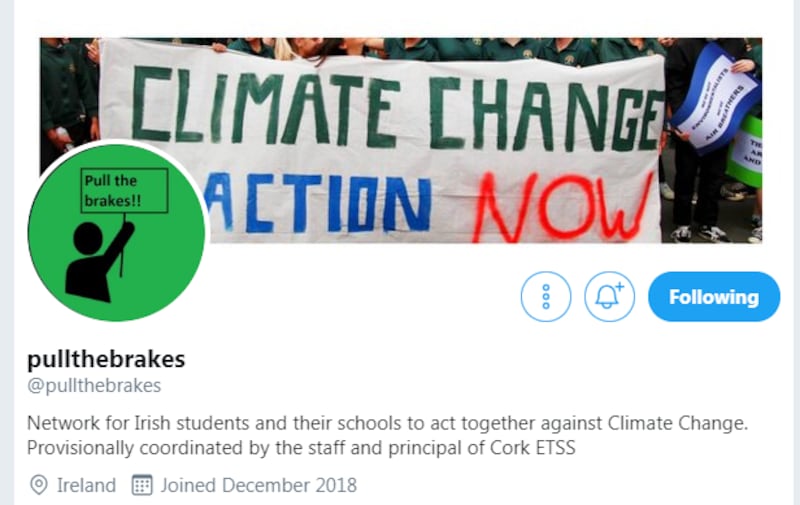
Blame game
It’s all very well to blame the politicians, who usually think in small timeframes because they face elections at least every five years and their jobs are on the line. Nor is it all about big business cleaning up their act, especially dirty fossil-fuel companies.
To decarbonise the world means not just that the economy has to reduce carbon quickly – the whole of society has to do its bit if we are to avoid climate breakdown.
This means every business, every community, every household and every individual has to face up to the emissions they generate. In the case of Ireland, we will have to retrofit most buildings, get rid of those oil-fired burners and use new cleaner technology. There is a case for putting solar panels on every available south-facing rooftop.
The task is immense, yet remarkably the scientists say it can be done – in other words, if we act quickly together the world can avoid the worst effects of a rapidly warming world.
But that means everybody has to take personal responsibility for their “carbon footprint”. What is your carbon footprint? What is your family’s carbon footprint? What are you doing to reduce it?
So what next?
Seriously, it is quite amazing to see how so many young people understand climate change, and the threat to nature.
For those who probably know all of this stuff already, it might be a good idea to pass on this mini-guide to adults you know and to send it to politicians who represent you, asking: “What exactly are you doing to address climate change?” That is a good action in itself.
Too many politicians don't understand the science or have chosen to ignore it. Some don't act unless constituents are really demanding something and they sense the anger out there.
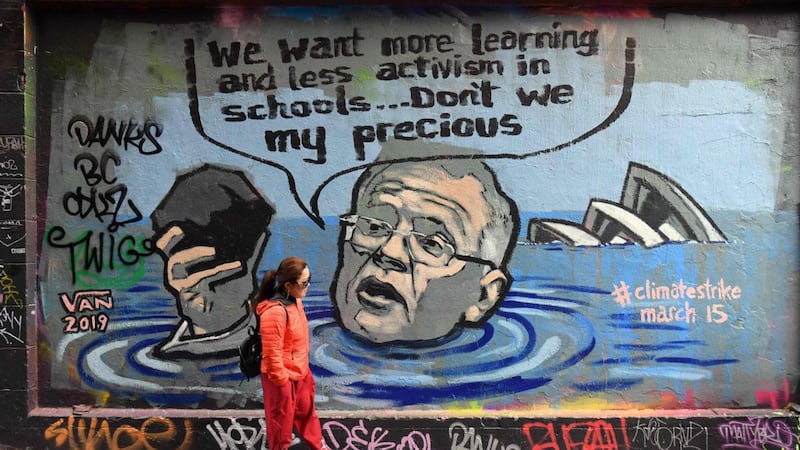
And for those who say they are too busy with more immediate threats like Brexit, you might add that we have 12 years left to avoid the beginning of those awful climate breakdown impacts. Tell them it’s cheaper to act now rather than dither and then rush to rectify matters when it will be much, much harder to get a grip on things and such efforts will involve using unproven technologies in a desperate bid to get on track.
The long haul
The hard lesson of campaigning: it is not possible to change the world through a single event or protest, even if it’s supported by hundreds of thousands of people globally and it grabs media headlines.
On the best way to advance your case, Greta with typical directness has tweeted a list of rules and recommendations for those on school strike for climate action: “No violence . . . No damage . . . No littering . . . No profit . . . Minimise your carbon footprint . . . Always refer to science.”
Climate justice campaigner Mary Robinson has strongly backed school strikers and quoted the advice of the global leader and former UN chief Kofi Annan: "You are never too young to lead, and we are never too old to learn."
There is growing evidence all is well on the first front when it comes to engagement on climate action, but there is a lot more to do with the older guys, including the politicians set in old ways and “let’s wait and see” thinking, and so little time to do it.

















